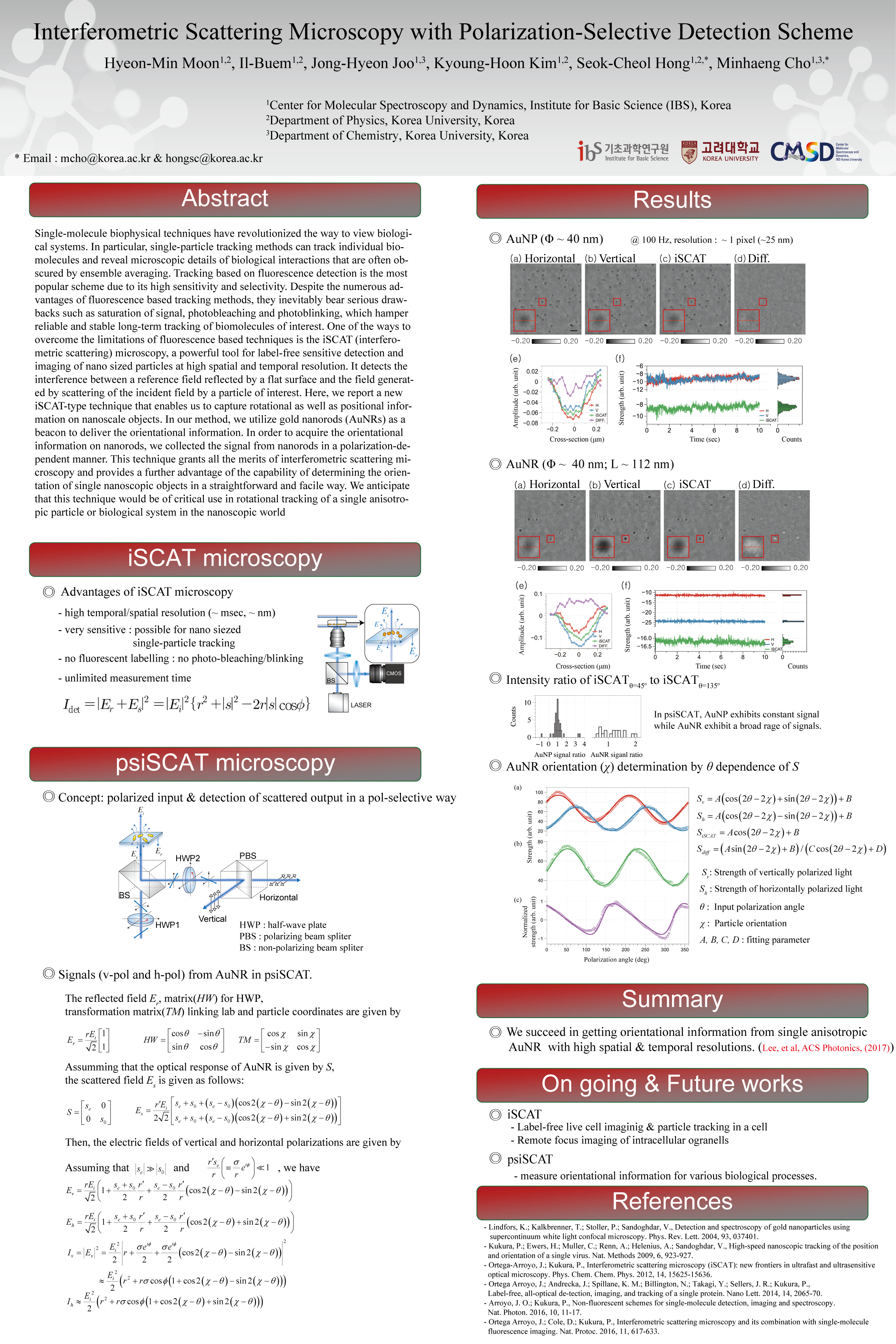mainmenu
Interferometric Scattering Microscopy with Polarization-Selective Detection Scheme
2019 IBS AOI Conference

Single-molecule biophysical techniques have revolutionized the way to view biological systems. In particular, single-particle tracking methods can track individual biomolecules and reveal microscopic details of biological interactions that are often obscured by ensemble averaging. Tracking based on fluorescence detection is the most popular scheme due to its high sensitivity and selectivity. Despite the numerous advantages of fluorescence based tracking methods, they inevitably bear serious drawbacks such as saturation of signal, photobleaching and photoblinking1, which hamper reliable and stable long-term tracking of biomolecules of interest. One of the ways to overcome the limitations of fluorescence based techniques is the iSCAT (interferometric scattering) microscopy, a powerful tool for label-free sensitive detection and imaging of nano sized particles at high spatial and temporal resolution2,3. It detects the interference between a reference field reflected by a flat surface and the field generated by scattering of the incident field by a particle of interest.
Here, we report a new iSCAT-type technique that enables us to capture rotational as well as positional information on nanoscale objects4. In our method, we utilize gold nanorods (AuNRs) as a beacon to deliver the orientational information. In order to acquire the orientational information on nanorods, we collected the signal from nanorods in a polarization-dependent manner. This technique grants all the merits of interferometric scattering microscopy and provides a further advantage of the capability of determining the orientation of single nanoscopic objects in a straightforward and facile way. We anticipate that this technique would be of critical use in rotational tracking of a single anisotropic particle or biological system in the nanoscopic world.
References
[1] Haase, M.; Hubner, C. G.; Nolde, F.; Mullen, K.; Basche, T. Photoblinking and photobleaching of rylene diimide dyes. Phys. Chem. Chem. Phys. 2011, 13, 1776−1785.
[2] Kukura, P.; Ewers, H.; Muller, C.; Renn, A.; Helenius, A.; Sandoghdar, V. High-speed nanoscopic tracking of the position and orientation of a single virus. Nat. Methods 2009, 6, 923−927
[3] Richard W. Taylor, Vahid Sandoghdar. Interferometric Scattering (iSCAT) Microscopy & Related Techniques. arXiv:1812.10765
[4] Il-Buem Lee, Hyeon-Min Moon, Jong-Hyeon Joo, Kyoung-Hoon Kim, Seok-Cheol Hong, and Minhaeng Cho. Interferometric Scattering Microscopy with Polarization-Selective Dual Detection Scheme: Capturing the Orientational Information of Anisotropic Nanometric Objects. ACS Photonics 2018 5 (3), 797-804


